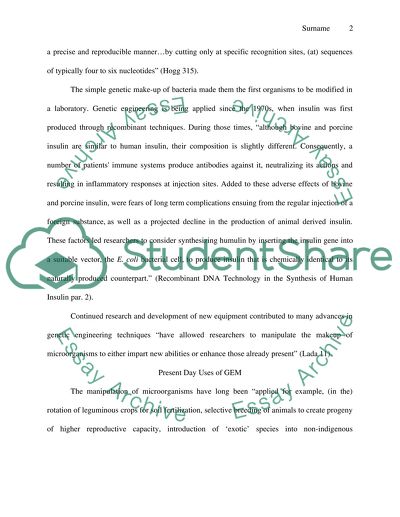Cite this document
(“ORelease of genetically engineered microorganisms : opportunities and Research Paper”, n.d.)
ORelease of genetically engineered microorganisms : opportunities and Research Paper. Retrieved from https://studentshare.org/environmental-studies/1463560-orelease-of-genetically-engineered-microorganisms-opportunities-and-pitfals
ORelease of genetically engineered microorganisms : opportunities and Research Paper. Retrieved from https://studentshare.org/environmental-studies/1463560-orelease-of-genetically-engineered-microorganisms-opportunities-and-pitfals
(ORelease of Genetically Engineered Microorganisms : Opportunities and Research Paper)
ORelease of Genetically Engineered Microorganisms : Opportunities and Research Paper. https://studentshare.org/environmental-studies/1463560-orelease-of-genetically-engineered-microorganisms-opportunities-and-pitfals.
ORelease of Genetically Engineered Microorganisms : Opportunities and Research Paper. https://studentshare.org/environmental-studies/1463560-orelease-of-genetically-engineered-microorganisms-opportunities-and-pitfals.
“ORelease of Genetically Engineered Microorganisms : Opportunities and Research Paper”, n.d. https://studentshare.org/environmental-studies/1463560-orelease-of-genetically-engineered-microorganisms-opportunities-and-pitfals.


